Programmatic Advertising - The ultimate guide
- Start
- Resources
- Ultimate guides
- Programmatic Advertising
What is programmatic advertising?
Programmatic advertising has been referred to by many as the ‘blackbox’ of online marketing, filled with jargon and almost exponential in its growth.
It can be a difficult subject to wrap your head around.
To help, we have gathered the trends to know in terms of programmatic advertising in 2023.
So, what is programmatic advertising?
Put simply, it is the process of using software to purchase digital advertising.
Whereas the traditional form of buying advertising relied on human interaction, proposals, presentations and quotes, programmatic advertising relies on algorithm-guided software to buy and sell advert space online.
On the advertising side, it’s the process of using different platforms to sell inventory on publishing sites. And from a publishers’ perspective, it involves buying inventory and placing ads.
There are three different categories of programmatic advertising:
- Real-Time Bidding: also known as an open auction. Real-time bidding (RTB) sets inventory price based on an auction that takes place in real-time. RTBs are open to both advertisers and publishers and considered a cost-effective way of purchasing digital ad space that will reach a large audience. RTBs are one of the most popular methods of purchasing programmatic advertising. It provides advertisers with an array of choice, whilst being able to control pricing.
- Private Marketplace: an invite-only process, where publishers offer available inventory to selected buyers. Price and restrictions are set by the publisher, but purchases can be structured based on campaign objectives – for example, audience reach or click-through rates. Due to the invite-only structure, fewer advertisers are competing for inventory.
- Programmatic Direct: also known as programmatic guaranteed, this process is a direct sale between buyer and seller. This process can suit both parties: publishers can monitor and regulate the cost of inventory, whilst advertisers can buy premium inventory in a transparent manner.
How does programmatic advertising work?
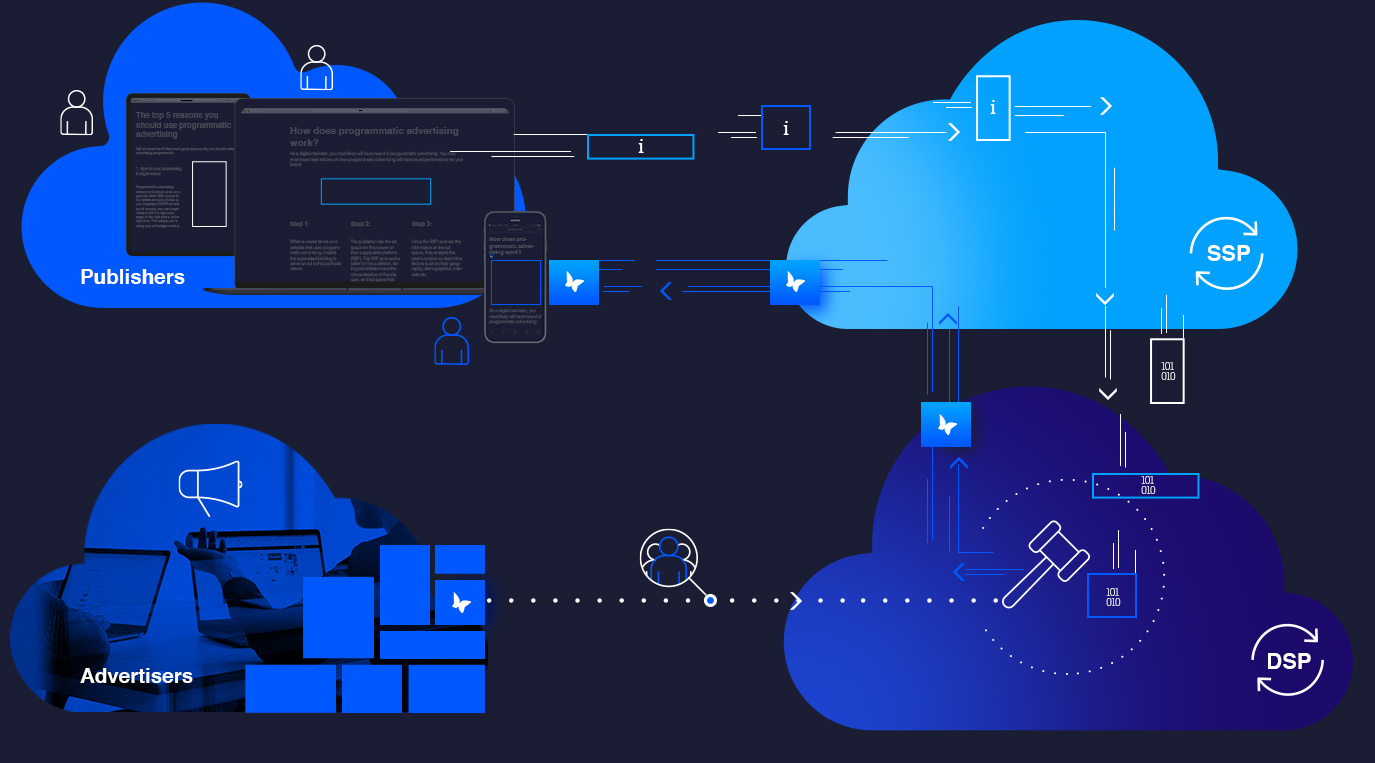
There are 4 components of the programmatic system. Demand-side platform (DSP) and supply-side platform (SSP) are the two most popular:
- Demand-side platform (DSP): Demand-side platform (DSP) is an interface where you can buy advertising inventory. They have access to multiple SSPs or ad exchanges and use algorithms to analyse bid requests. Then they will respond with bids and creatives in real-time auctions.
- Supply-side platform (SSP): Supply-side platform (SSP) enables publishers to sell their inventory, with access to a variety of networks, exchanges, and platforms via one interface.
- Ad exchange: Similar to a trading floor of a stock market, an ad exchange lets advertisers meet publishers to agree on a cost to display ads on a website. Ad exchanges usually operate via real-time auctions. They sit in the middle of the programmatic ecosystem, in between the DSP on the advertiser’s side and the SSP on the publisher’s side.
- Data management platform (DMP): A unifying platform that gathers, organises, and actions data acquired from programmatic advertising. It allows users access to unique insight that can help inform their campaign approach.
It is important to understand that not all programmatic advertising is real-time advertising.
Both DSPs and SSPs are leveraged by advertisers and publishers respectively, to better inform their strategies. Advertisers use DSPs to understand the key metrics to purchase and how much to pay, whilst publishers use SSPs to sell the ad space. The two platforms are then matched up in real-time.
As a digital marketer, you most likely will have heard of programmatic advertising, or programmatic display ads. You may even have read articles on how programmatic advertising will improve ad performance for your brand.
Yet, we don’t blame you if you don’t quite understand how exactly the programmatic process works.
Therefore, here is a step-by-step guide to the most common format of programmatic, from beginning to end, to help you understand the process:
Step 1:
When a viewer lands on a website that uses programmatic advertising, it starts the automated bidding to serve an ad to this particular viewer.
Step 2:
The publisher lists the ad space for this viewer on their supply-side platform (SSP). The SSP acts as the seller for the publisher, letting advertisers know the characteristics of the site, user, and ad space that allows DSPs to make their bid. Essentially, they advertise the product (the ad space) for sale.
Step 3:
Once the SSP receives the information on the ad space, they analyse the user’s cookies to determine factors such as their geography, demographics, interests etc.
Step 4:
Next, the corresponding demand-side platform (DSP) reviews the information on the user provided by the SSP. DSPs act for advertisers to choose ad space that aligns with the advertisers budget and targeting parameters. It assigns the ad placement a value based on the website and user’s characteristics.
Step 5:
On behalf of the advertiser, the DSP makes a bid on the ad placement. All this happens in real-time which why programmatic advertising can often be referred to as real-time bidding (RTB).
Step 6:
Once the SSP receives the bids from various DSPs, the SSP will then pick the winner. There are different bid strategies out there for different SSPs. Waterfall bidding, Client-side, and Header bidding with header bidding widely considered the most efficient and fair.
Step 7:
Once the winning bid is picked, the SSP displays that ad to the user on the publisher’s site. This entire process of selecting a programmatic display ad happens in milliseconds – all while the page is loading for the user.
Why is programmatic advertising important?
Digital marketing continues to dominate the advertising space and remains the go-to medium to engage audiences. As such, programmatic advertising will only increase in importance. There are several reasons for this:
Greater control: Programmatic advertising gives advertisers better control over their campaigns, dictating when their content is seen by audiences and how much it is costing them. Advertisers can pause and resume ads based on preference, making it a preferable process for both large and small businesses alike.
Better efficiency: Programmatic advertising is a much faster process than other methods, whilst also being cheaper. A survey by Nielsen found that brands who used programmatic advertising enjoyed an 11% increase in reach efficiency. This means that for the same level of investment, brands reached 11% more unique customers.
Multi-channel reach: Through programmatic advertising advertisers can reach a much larger audience. By being granted access to millions of websites, businesses can reach a diverse range of users which can be matched to campaign objectives.
Real-time data: Not only can advertisers bid for ad space in real-time, but they can also monitor data in real-time too. This makes it easy to make decisions on-the-fly and maximise campaign results. Access to data also means that campaigns can be swiftly optimised to ensure a better ROI.
Programmatic advertising is only increasing in importance within the digital advertising sector. In fact, according to Statista, programmatic advertising accounts for 72% of all digital advertising spend – a significant increase from 2018, when it only accounted for 61.2%. We expect this method of advertising will be a crucial tool for advertisers in years to come.
The top 5 reasons you should use programmatic advertising

Here are 5 good reasons why you should make your advertising programmatic.
1. Spend your advertising budget wisely
Programmatic display advertising allows you to target users on a granular level. With access to incredible amounts of data at your fingertips (GDPR compliant of course), you can target viewers with the right message, in the right place, at the right time. This means you’re using your ad budget smarter, eliminating waste on viewers who are unlikely to be interested in your product.
2. Real-time measurement and optimisation
With programmatic advertising, the performance of each ad is measured in real-time. Now, advertisers need not wait for an excel sheet from their media agency weeks after the ads go live – too late to optimise a live campaign.
Programmatic allows advertisers to adjust and optimise ads there and then to test and improve results as well as have clear oversight on their ad spend.
3. A transparent way of buying media
In the days before programmatic advertising, brands would be forced to rely on agencies and third parties to handle their ad spend. Now, brands can have full transparency over fees. Plus, exactly where and how much of their money is being spent on what.
4. It’s not all about the data
Of course, targeting through programmatic advertising doesn’t have to involve knowing everything about a user. That’s where contextual targeting provides a seamless – and less intrusive – way of reaching your desired audience. This way, you can target users based on keywords and contextual relevance of a page.
5. Multi-channel and format reach
With the increasing number of digital touchpoints of your average user, your advertising should be keeping up. This is where programmatic advertising is leading the charge. It allows you to reach audiences across devices: on mobile, desktop, tablet, in-app, via TV and even out-of-home. The possibilities are endless!
What are the different formats of programmatic advertising?
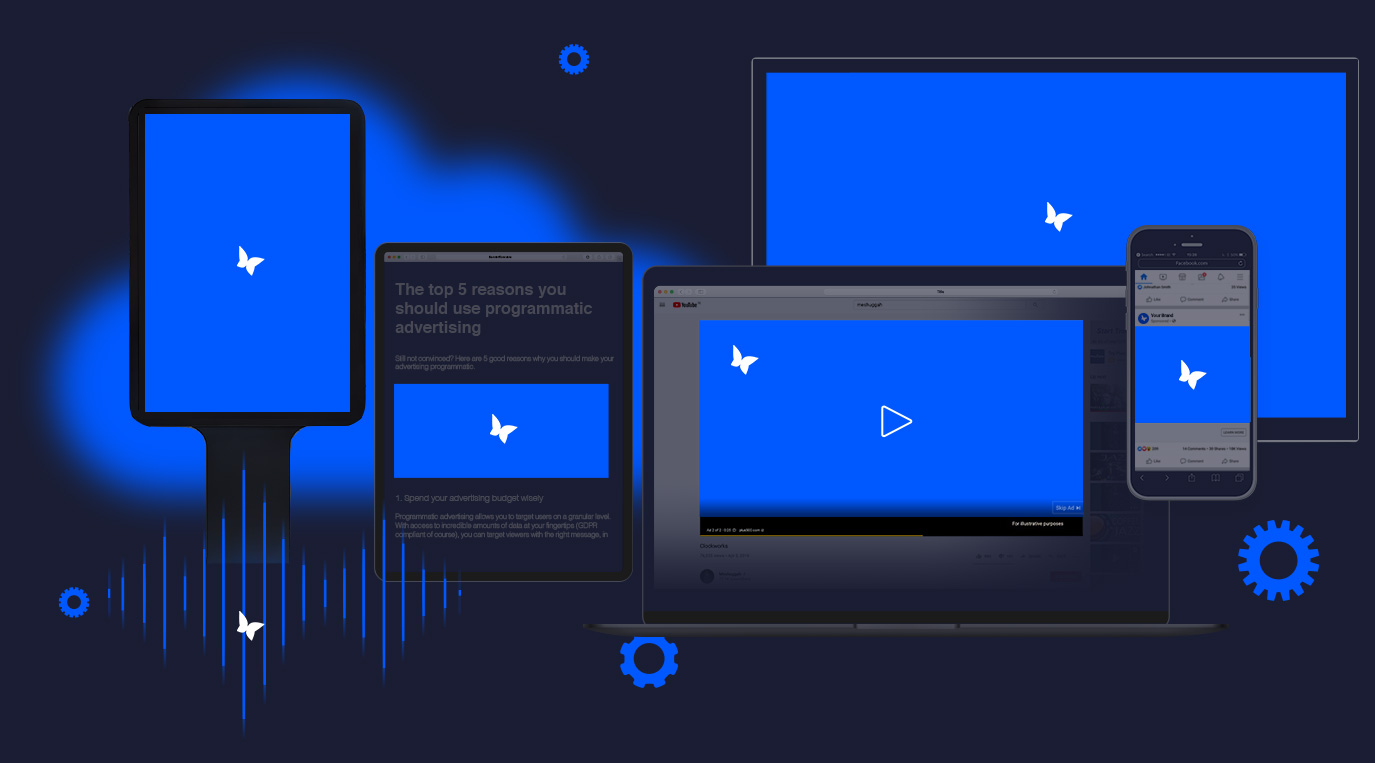
Programmatic advertising now covers a range of different advertising formats. A decade ago it was mainly just display advertising but now there are a range of different and growing options.
Display
The oldest format of programmatic advertising is display. However, rather than staying static, ads have gone dynamic! Constant technological developments, mobile optimisation and better use of data have seen new opportunities emerge. With the rise of new technology, many marketers have embraced programmatic creative strategies that target viewers, with the right offer, at the right time.
Read more about dynamic and personalised strategies for your programmatic display advertising here.
Video
Buying and serving digital video programmatically – across channels – is now a key strategy for marketers. Indeed, programmatic Video ad spend is predicted to be $13.4 billion in 2019 and account 76.5% of how all digital video spent.
There are two distinct types of programmatic video: instream and outstream (with in-banner video sometimes classified as a type of outstream ad). You can read more about digital video here.
Native and social
These are programmatic ads that blend into the content either on a website, social network or other application. For example, it could for sponsored content, so setting up contextual targeting as well as tailoring your ads is very important.
What’s more, DSPs now offer the chance for advertisers to buy programmatically across the major social advertising networks – with social video particularly popular.
Voice
The development of Amazon’s Alexa and the rise of streaming apps such as Spotify, have seen the emergence (or reemergence) of another format: voice. This format offers a rich source of both contextual and user focused targeting. It is quickly maturing too, with Google offering advertisers the chance to buy programmatic audio ads through it’s DSP.
Digital out-of-home (DOOH)
Programmatic is entering the world of out-of-home advertising, with the adoption of digital signage. The cumbersome production process of advertiser, agency, media seller, and printer is set for extinction. In its place, integration across existing programmatic platforms is offering the possibility of real-time DOOH ad optimisation and reactivity.
Television
Currently, programmatic television ad spend is not big (in the US it accounts for just 2.5% of total ad spend). Yet, many large industry players, such as Google, SKY and Netflix, are building the infrastructure needed to support the move to programmatic TV. However, out of the programmatic formats mentioned, the format is in need of more development.
How do you buy programmatically?

Before you begin buying programmatic buying, it’s important to ask the right questions and get a clear strategy in place for what you actually want to achieve.
The three major questions you should ask yourself are:
- Can it help us reach our target audience?
- Should we use programmatic for brand awareness or for driving conversions?
- How will programmatic advertising improve my bottom line?
Once you know the answers to these questions, it becomes easier to determine exactly what you should prioritise when it comes to budget and ad placements for your programmatic advertising strategy.
Of course, after you have determined the right strategy, you must pick the right DSP for your brand. There is a multitude of providers out there so make sure you’re asking the right questions from your DSP too.
The key factors you need to consider when choosing a DSP
- First, consider the audience you are hoping to reach. Which DSP offers the most reach, segmentation, and channels aligned with your target market? Remember, SSPs are better than others in some countries, so select the DSP that aligns most with your markets. And make sure to pay attention to what publishers your DSP associates within each target market.
- How does your DSP charge you? Is it on a cost-per-thousand (CPM) or cost-per-click (CPC) basis? Typically, DSPs that charge on CPM are more transparent with their cost margins.
- What support facilities does your DSP provide? You might prefer a DSP with an agency style set-up, where you can get the support you need in launching and optimising your campaigns.
- Check whether your DSP can execute an effective cross channel strategy should you desire it.
- Consider how a DSPs can integrate with your chosen data management platform (DMP) or creative management platform (CMP). Smaller DSPs are more likely to be flexible on integration.
- Ultimately, as Bannerflow Product Owner, Jared Lekkas, states: “you get what you pay for”. Do your research on what you need in terms of targeting, optimisation, and control. Be ready to pay for it if you want quality! (You can expect hidden fees if the price is too low)
With your strategy and the right technology in place, your programmatic advertising campaigns work in a similar manner and best practice to any other digital marketing campaign. Make sure to test different messaging and creatives, target different personas, and experiment with new placements and bid strategies.
How do you create programmatic display advertising?

Essentially, there are two different ways for marketers to create programmatic display advertising. It can be quickly summarised as with a creative management platform (CMP), or without one.
Without a CMP
It is entirely possible to manually design and then code display ads yourself. There are plenty of tutorials and templates online showing you how to do this. However, the process is extremely slow. It also means you need staff who possess knowledge of HTML5 and CSS, as well as, the creative skills of a designer!
What’s more, this process is repetitive, cannot easily be scaled, involves too many manual tasks, too many stakeholders, and is far too time consuming. Plainly, it is simply unworkable for modern programmatic advertising.
With a CMP
Alternatively, you can use a creative management platform such as Bannerflow. CMPs take care of any coding, and enable rapid mass production of dynamic display advertising.
CMPs also save time, produce better ads, and are favoured by marketing teams that do large, data driven display campaigns that are creatively ambitious.
The benefits of using a CMP
The reality is that a creative management platform decreases the time it takes to build, scale and publish a programmatic display campaign. It enables easy A/B testing of campaigns as well as the real-time optimisation and control of published ads.
Not to mention CMPs place the focus of display ad production firmly on design. Plus, a CMP, such as Bannerflow is integrated with all the major programmatic networks, meaning publishing to your favoured network is simple.
What is the future of programmatic?
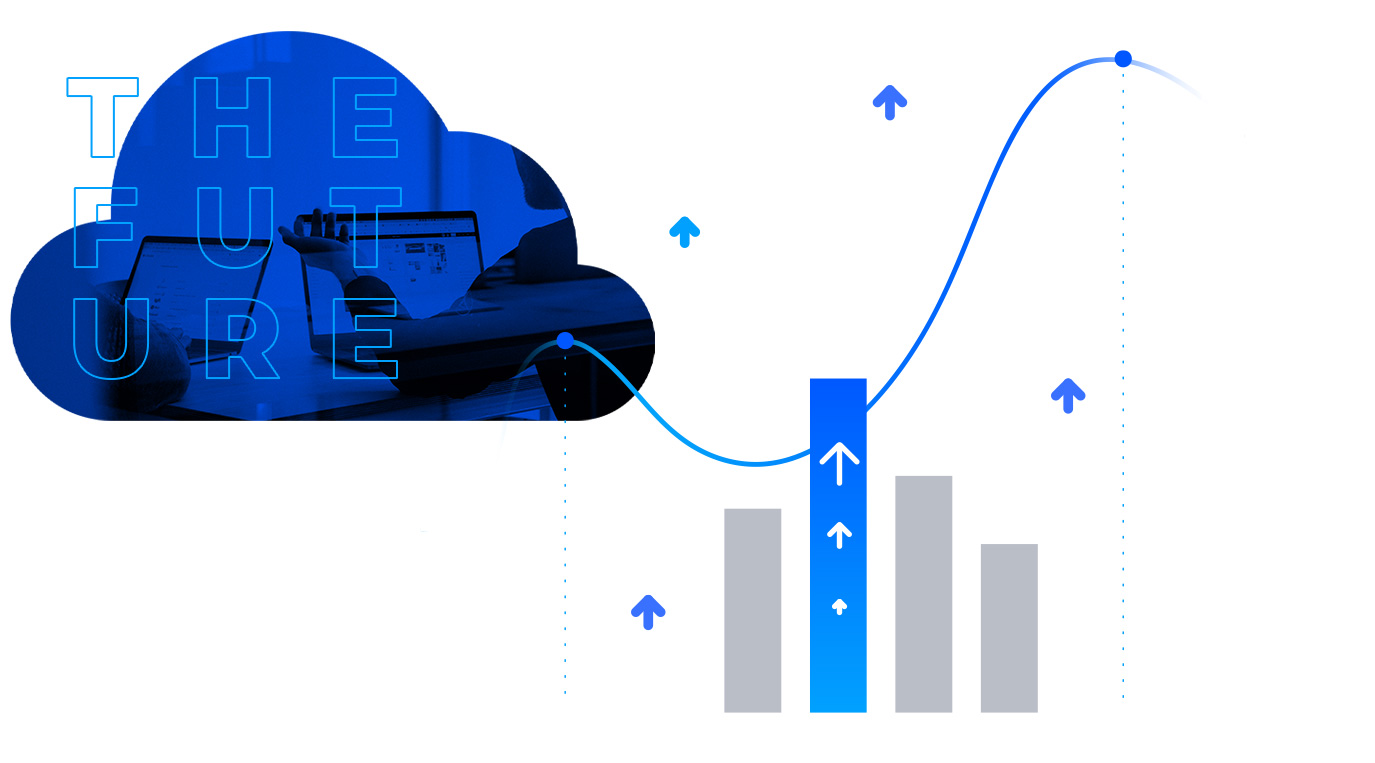
Programmatic advertising is nothing new, yet it’s in constant change. New technologies, regulations, and best practice make this an exciting element of digital marketing. Yet, what should you look out for in the future of programmatic?
The battle continues over privacy: personal data and how advertisers can use it
In 2018, the European marketing industry was transformed with GDPR, it placed restrictions on the use of third-party data and how advertisers could use personal data for targeting use.
ePrivacy is set to shape 2020 and beyond. Indeed, the proposed extension to GDPR regulation will likely extend the reach and restrictions from governments on the use of cookies in particular. Read more about it here.
Cookie-less tracking
Thanks to increasing difficulties with tracking imposed by different browsers, cookies are becoming less and less effective for targeting.
Expect to see the rise of deterministic and probabilistic tracking. Read more about the two different methods here.
The influence of AI on media buying and programmatic creative
Artificial intelligence has a number of uses in programmatic advertising. We’re already seeing a significant impact in personalisation and optimisation of creative with the rise of dynamic creative optimisation (DCO).
Plus, IBM Watson has proved that it can drastically reduce CPC using AI technology.
In-house programmatic advertising
96% of those surveyed from the Bannerflow/Digiday State of In-housing report stated that advertising technology was the driving force behind their move in-house.
In an age where transparency in digital marketing is a key consideration, brands taking control over their programmatic ad production and buying comes as no surprise.
Programmatic advertising is constantly evolving and staying on top of the latest technologies and strategies is an important part of an effective programmatic strategy.
Programmatic display advertising: the glossary
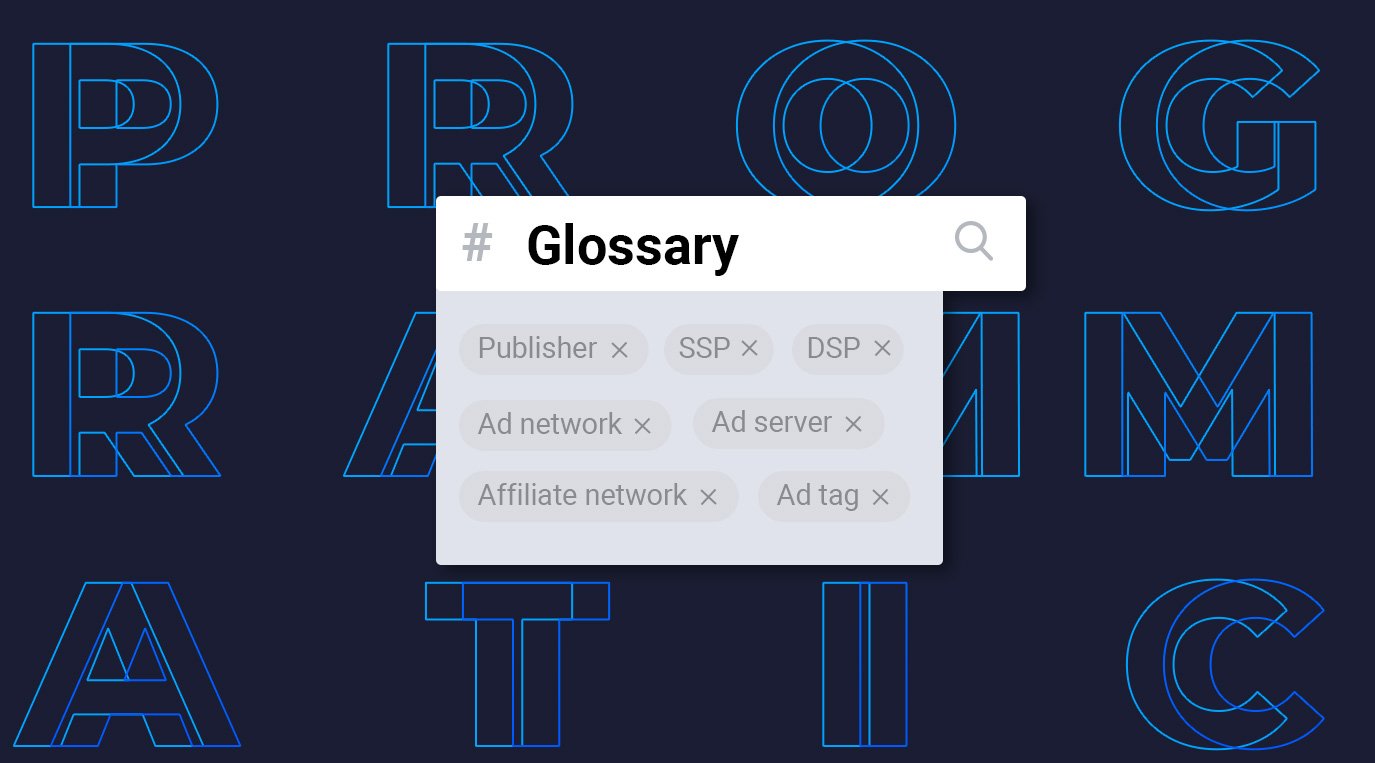
Publisher: a corporation that distributes digital publications. Examples include: Facebook, Schibsted, New York Times, Sanoma.
Supply-side platform (SSP): enables publishers to sell their inventory. Access to a variety of networks, exchanges, and platforms via one interface.
Demand-side platform (DSP): Interface where you can buy advertising inventory. They have access to multiple SSPs or ad exchanges. Uses algorithms to analyse bid requests and respond with bids and creatives in real-time auctions.
Ad tag: advertisers use ad tags to direct the browser to a particular ad. Determines the size, type and URL of each individual ad. What’s more, ad tags also collect campaign data and verify certain metrics, such as impressions and clicks.
Ad server: Aggregates all the campaign information (reporting, audience) across publishers, ad networks, search, social etc. Moreover, they verify whether the impressions were served properly and help perform creative optimisation.
Affiliate network: a program that connects advertisers and affiliate marketers. Affiliates are paid when an ad successfully converts a viewer on their site.
Ad network: Acts as a broker between a group of publishers and advertisers. It aggregates unsold inventory from publishers and sells impressions at a cheaper price (usually lower quality).
What is programmatic creative?
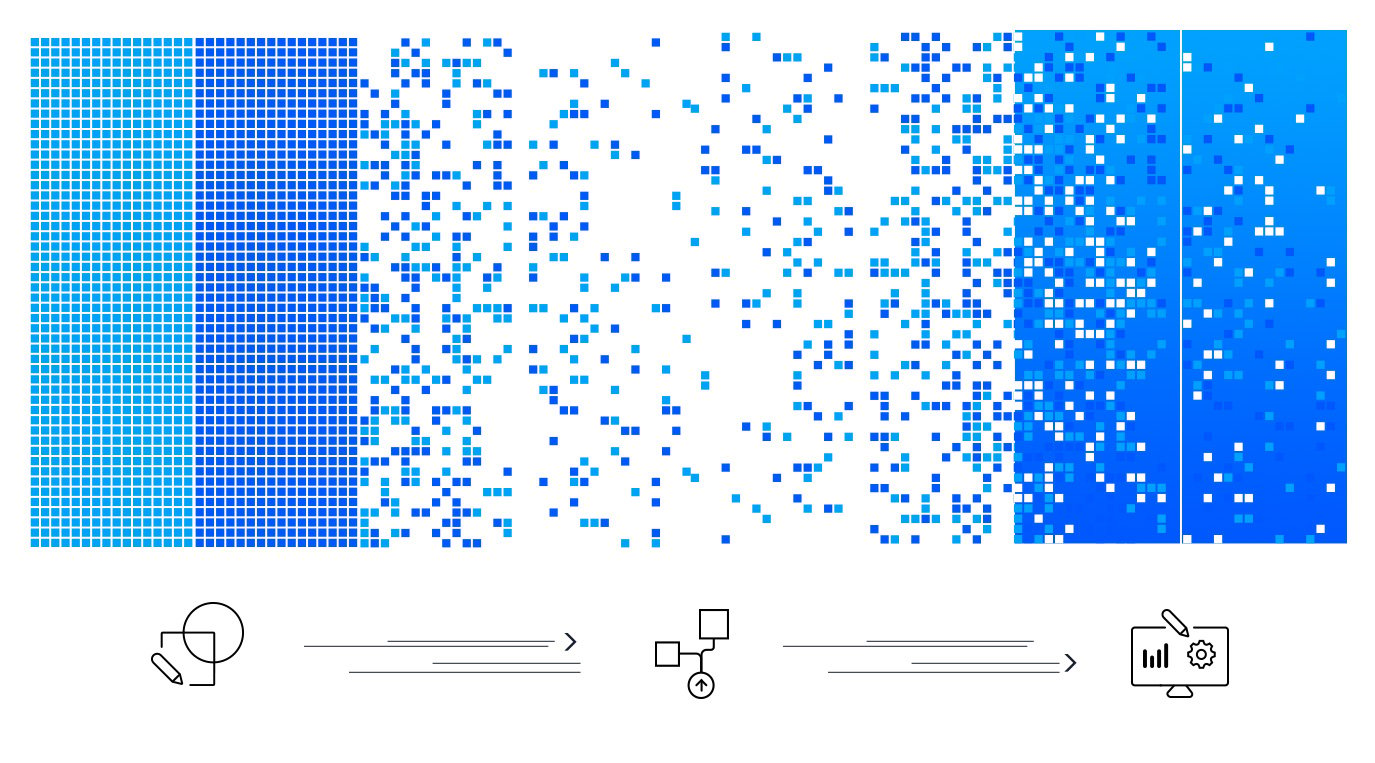
We define what programmatic creative is, what it includes, and suggest different programmatic creative technologies by answering the following questions:
- What is programmatic creative?
- Why use programmatic creative?
- Why is the “creative” part of programmatic creative so important?
1. What is programmatic creative?
Programmatic creative is the automation of the building, publishing and optimising processes of display advertising. It is an umbrella term for a range of different dynamic strategies and technologies, all of which aim to add speed, scale, relevance and performance to display campaigns.
Programmatic creative is also a result of the adoption and growth of a range of programmatic advertising technologies. Programmatic advertising being the automated transaction of buying and selling of advertising online.
2. Why use programmatic creative?
Today, programmatic advertising is how the majority of display advertising is served. It is highly unlikely that a marketer will not buy inventory programmatically. It is, therefore, the default method of publishing display advertising.
Indeed, in 2019, US total spend on programmatic advertising is set to reach $59.45 billion, and account for 84.9% of all display advertising. By 2021, the prediction is that it will account for 88% of all US display advertising, and spend will reach over $81billion!
Using programmatic creative technologies, such as creative management platforms (CMPs) enables marketers to make the most of this growth. Marketers can benefit by combining ad automation, data and creativity to increase their display advertising performance.
3. Why is the “creative” part of programmatic creative so important?
If done right, programmatic creative is an effective way for marketers to stand out in an ever more crowded field. This is especially important as more and more advertisers are using programmatic display, and the cost of entry is getting lower and lower. But why is the “creative” part of programmatic creative so important?
Firstly, “creativity” within programmatic creative doesn’t just mean design! It is the way in which marketers use programmatic buying to target (and retarget) consumers. As any media buyer will tell you, you can use data creatively to reach the right customer at the right time, with the right message.
Secondly, marketers need to remember that behind every ad is a real customer. To stand-out and be impactful having the right message, at the right time, is no longer enough. You must also reach your target with the best “creative” combination. As Zoe Harris, CMO of GoCompare writes in Marketing Week, “a poor story can’t be helped in any channel, no matter the spend that’s put behind it”.
What are the essential programmatic creative technologies?
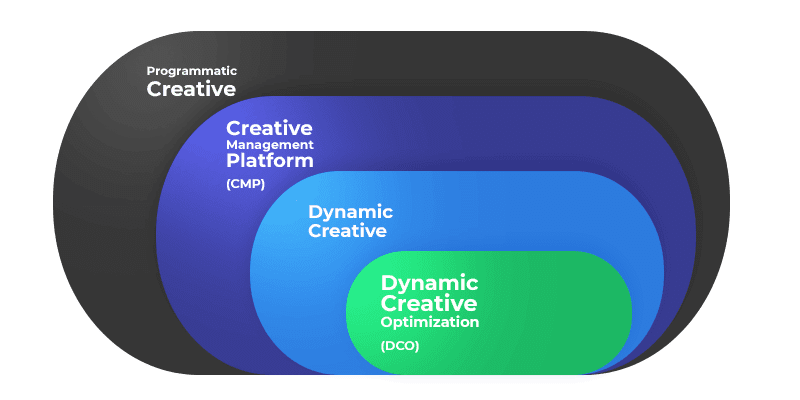
Programmatic creative technologies paired with programmatic buying enables marketers to reach the right customer, at the right time – and present the most relevant message. The analysis of data from these processes enables even greater relevancy through personalised messaging. Thus allow marketing teams to improve performance through ad customisation.
Indeed, programmatic customisation is now a common practice for many marketing teams. Nikki Gilliland of Econsultancy notes that “vast amounts of data mean[s] that advertising creative can dynamically change to be more relevant to customers, with ads adapting to factors like location, device, weather, time, and demographics”. Yet, what is the best way to achieve this?
These are the three key programmatic creative technologies that display advertisers need to use:
Creative management platforms (CMPs)
Creative management platforms enable marketing teams to rapidly build and publish quality programmatic display advertising across formats. As well as use data to customise images and messages based on real-time ad analytics.
Using a CMP, even the smallest of in-house teams can become an ad factory. Smart automation means teams can produce countless display ad variations for multi-market, multi-audience campaigns.
For example, hotel chain, Meliá Hotels International, via the Bannerflow CMP, produces over 2000 ad variations for different audience segments every week. Without a CMP this creation aspect of programmatic creative is impossible.
Furthermore, without the use of a CMP other programmatic creative technologies such as dynamic creative and dynamic creative optimisation (DCO) are too complex or impossible. This is because both require complex individual HTML5 coding and repetitive design processes – all of which a CMP performs automatically.
Dynamic creative
Dynamic creative is advancing in adoption and sophistication. This is thanks to the ad tech infrastructure built up to support programmatic media buying.
Better use of audience data, segmentation and targeting strategies, as well as optimised bidding strategies based on analytics has seen this aspect of programmatic creative grow.
Dynamic creative is a programmatic creative strategy that can use a viewer’s location, what they’re reading, the weather, what device they’re on – among many other data options – to select the best pre-built display ad variation to present to a customer.
It also refers to the use of data feeds within a display ad that are tailored to present the most up-to-date or relevant information for a particular viewer. For example, a sports betting company based in the UK, using dynamic creative, is able to retarget a German customer, with the latest odds and ad creative for a Bundesliga match – across both mobile and desktop.
However, in order for dynamic creative to be successful, having the right programmatic creative technology is a must. Therefore, to create the ad variations required, simply and quickly, a combination of a CMP, demand side-platform (DSP) and data management platform (DMP) is recommended.
Dynamic creative optimisation (DCO)
Dynamic creative optimisation is next level dynamic creative. It is currently the best combination of programmatic creative technologies available to marketers who do display advertising.
DCO allows marketers to optimise and customise the best creative combination for a particular audience segment. By using a CMP these ad variations are easily designed and optimised in real-time through continuous A/B testing – enhancing ad performance and relevancy.
However, within DCO there are different types of DCO! For example, template-based DCO, is manually coded and pre-programmed. This means while ads can be rendered in real-time, only elements such as text and images adapt to user data. This can work very well but often leads to boring ads with product feeds with some personalised text and not much more.
The ultimate form of programmatic creative is DCO that uses a CMP. A CMP, in combination with a DCO platform, enables more creative ad concept and the use of a selection of different ad variations. For example, in-banner video and other interactive features. DCO with a CMP means greater creative control and impact through creative ad design.
